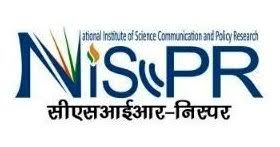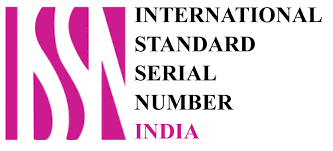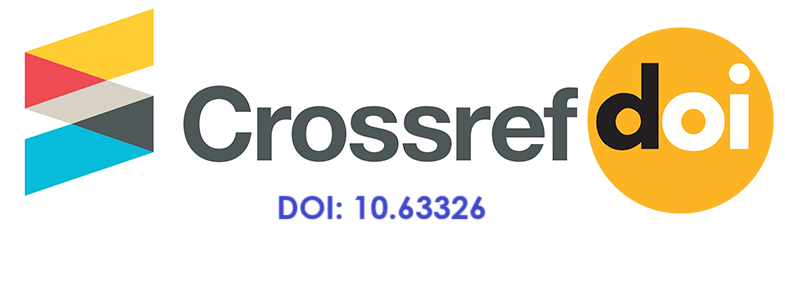Volumes

A journal volume is an annual collection of issues published by a journal, containing research articles that are peer-reviewed and organized systematically for citation, indexing, and long-term preservation. Each volume reflects the publisher’s commitment to maintaining academic continuity, research visibility, and credibility for authors. Journal volumes provide a permanent academic record, allowing researchers to cite articles accurately with volume and issue numbers. They support indexing in global databases like Scopus, Web of Science, and Google Scholar, ensuring high discoverability. Volumes are also stored in institutional repositories and digital libraries, serving as a reliable reference source for researchers, educators, and policymakers. For authors, inclusion in a recognized journal volume enhances professional reputation, academic evaluations, and global recognition.
Journal Volumes: Uses and Guidelines
Key Uses:
Archival Reference: Helps readers and libraries cite and reference published works in a standardized format (e.g., Volume 5, Issue 2, 2025).
Indexing & Discoverability: Ensures papers are properly indexed in databases (Scopus, Web of Science, Google Scholar, etc.).
Academic Recognition: Authors’ works gain credibility through inclusion in a peer-reviewed volume.
Institutional Access: Volumes are stored in institutional repositories and digital libraries for long-term access.
Citation Consistency: Provides authors and readers with a permanent record of the publication year and sequence.
Archival and Citation Value
Each paper published within a volume gets a unique citation format (Volume X, Issue X, Pages XX-XX).
Enables standardized referencing in theses, dissertations, and future research.
Indexing and Research Discoverability
Volumes are submitted to global indexing agencies (Scopus, Web of Science, CrossRef, Google Scholar, etc.).
Ensures researchers can easily locate published works using keywords, volume numbers, or DOIs.
Institutional and Library Access
Volumes are catalogued in institutional repositories, university libraries, and digital archives.
Serves as an official record for research evaluation, grants, and promotions.
Academic Recognition and Prestige
Publishing in a peer-reviewed volume enhances authors’ academic credentials.
Contributions to recognized volumes count towards professional recognition, research assessment exercises, and academic awards.
Long-term Preservation
Volumes ensure research is preserved for decades.
Digital volumes are safeguarded in publisher’s repositories and digital libraries for accessibility worldwide.
Key Characteristics of a Journal Volume:
Continuity: Maintains a yearly record of publications in sequence.
Consistency: Helps authors, readers, and libraries reference works accurately.
Organization: Divides research into manageable issues for regular release (quarterly, biannual, or monthly).
Permanence: Published volumes are stored in both digital and print form for long-term academic use.
Volume Assignment & Publication Cycle
Each journal operates on a set frequency (Quarterly, Biannual, Monthly, etc.).
Papers are grouped into issues (e.g., January–March = Issue 1).
At the end of the year, all issues together form the annual volume.
Authors cannot request a particular volume/issue; editorial scheduling determines placement.
Guidelines for Authors
Authors must prepare manuscripts strictly according to the official template provided by Jack Sparrow Publishers.
Submissions must be original, unpublished, and not under review elsewhere.
Authors should upload manuscripts via the publisher’s Online Submission Portal or by email (if applicable).
Plagiarism is checked using advanced tools; manuscripts exceeding the plagiarism threshold will be rejected. Authors should ensure plagiarism-free work (checked via standard tools).
Include: Title, Author(s), Affiliation(s), Abstract, Keywords, Introduction, Methods, Results, Discussion, Conclusion, References.
Follow APA/MLA/IEEE referencing style (as specified by the journal).
Figures, tables, and equations should be numbered sequentially and clearly captioned.
Every manuscript should include:
Title Page – Title, author(s), affiliation(s), ORCID ID, and corresponding author details.
Abstract & Keywords – Concise summary (150–300 words) with 4–6 keywords.
Introduction – Context, background, and research gap.
Methodology – Detailed approach, experimental setup, or framework used.
Results & Discussion – Findings supported by tables, charts, and analysis.
Conclusion & Future Work – Summary and potential research directions.
Acknowledgments (if any) – Funding, institutional support, etc.
References – Follow the required citation style (APA/IEEE/MLA, depending on the journal).
Formatting Standards:
Font: Times New Roman, size 10, double-spaced, based on journal templates.
Figures & Tables: High resolution, sequentially numbered, with clear captions.
Equations: Properly formatted using MathType or LaTeX.
Reviewers evaluate originality, clarity, methodology, and contribution to the field.
Authors may be asked to revise and resubmit based on reviewer comments.
Accepted papers are assigned to a specific issue within a volume.
Authors cannot request specific volume numbers; assignment is determined by editorial planning.
Volumes are generally published annually, with 1–6 issues per year depending on the journal.
Authors must follow the Publication Ethics and Malpractice Statement of Jack Sparrow Publishers.
Misconduct such as plagiarism, duplicate submission, data fabrication, or improper authorship claims leads to rejection and blacklisting.
Data falsification, plagiarism, duplicate submissions, or unethical practices lead to immediate rejection.
Authors must comply with the Publication Ethics Policy of Jack Sparrow Publishers.
Authors will receive proofs for final correction before publication and must review proofs carefully before final publication in the assigned volume.
Once approved, the article is published online with a DOI (Digital Object Identifier) and indexed later, included in the bound annual volume.
Increased Visibility: Indexed in academic databases.
Academic Contribution: Adds weight to CVs, research portfolios, and institutional evaluations.
Digital Preservation: Long-term accessibility in publisher’s digital archives.
Recognition: Eligible for awards (e.g., Best Paper of the Volume).
Permanent Visibility: Papers are permanently preserved in an annual volume.
Indexing & Recognition: Published works are submitted to indexing agencies, boosting visibility.
Academic Career Growth: Inclusion in peer-reviewed volumes enhances CVs, promotion applications, and grant proposals.
Global Reach: Digital volumes are accessible worldwide through the publisher’s platform.
Awards & Recognition: Best Paper, Best Reviewer, and Best Student Paper awards are often based on contributions to volumes.















